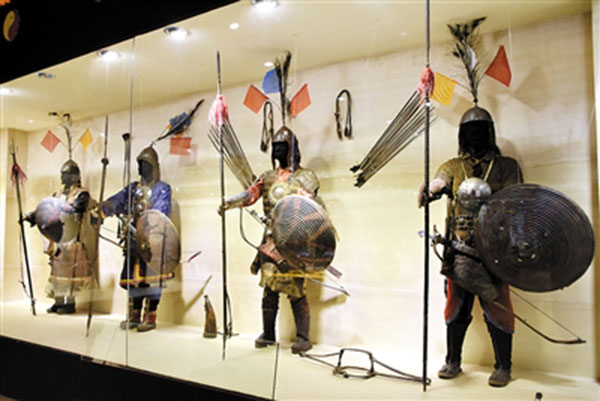 |
|
Antiques on display at the private museum funded by Chojor. [Photo/chinatibetnews] |
Things changed when two ranchers from the US visited Chojor in 1997, trying to buy some of his collections at a high price. Tibetan antiques are popular in US museums, which made Chojor realize that he wanted his collection to be displayed in China only.
Chojor decided to build a private museum in his hometown. After years of preparation and with the support of the local government, the seemingly unachievable goal was reached when construction finally began in April 2013.
During two weeks of evaluation organized by the government, experts were shocked by the scale of Chojor's collection.
"I was not only surprised by how many items he had, but there were also some legendary Tibetan white ware. If justified by further investigation, it will definitely fill a gap in the history and art research," said Lobsang Tashi, chief of the department of Identification, Cultural Heritage Administration of Tibet.
One section of the museum exhibits Tibetan writing materials and books yellowed with age. There is also a Tibetan abacus, a brochure of the astronomical calendar and other items related to science, art and religion.
The most remarkable exhibits are 17 complete sets of ancient Tibetan weapons from the last 1,000 years from the Tang to Qing dynasties.
"They are the reason we named the place an ancient weapons museum. One set can be sold for $800,000. The price is estimated by US experts for a similar set in the Metropolitan Museum of Art in New York," said Chojor.
The set in New York was taken there by a nobleman. "The helmet and the spear were missing. I wish they could have been preserved in Tibet and never be taken overseas," said Chojor.
Even for less impressive exhibits, Chojor knows the background and significance of each.
"An ancient javelin was found in Xigaze. When Tibet was invaded by Gurkhas from Nepal in 1791, the javelin was given by the Qing government to support us to protect our homeland, so it is also a symbol for the ethnic unity of China," said Chojor.
He hopes that when the museum is able to run on its own, it can be developed into a patriotic education base.
